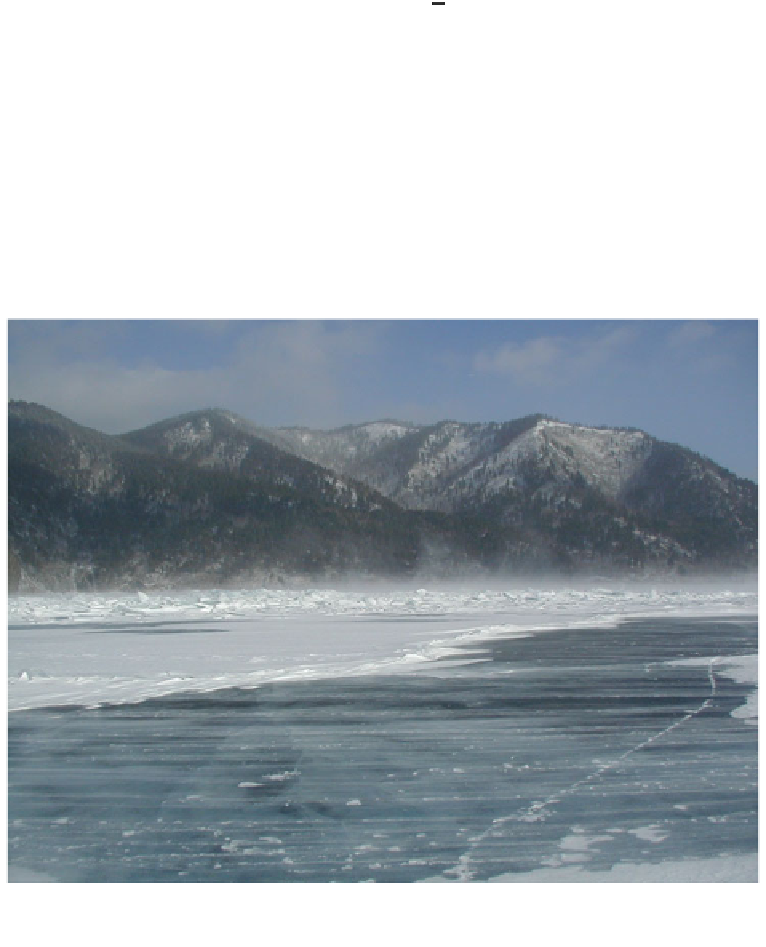Geoscience Reference
In-Depth Information
q
q
i
h
s
1
h
si
¼
3
h
s
ð
3
:
7b
Þ
When liquid precipitation acts as the water source for slush formation, the snow-ice
layer will be a half-and-half mixture of the snow on ice and the rainwater, with the upper
limit of
q
q
i
h
s
2
h
si
¼ 2
3
h
s
ð
3
:
7c
Þ
The thickness of snow-ice is usually below the theoretical limiting values (
3.7a
,
b
,
c
).
In large lakes, in the presence of a strong wind or current forcing the ice may break and
the resulting blocks pile up into deformed or agglomerate ice (Fig.
3.8
). The force is equal
to the surface stress times the fetch, and with long fetches (length scale of the lake), wind
can produce the highest forces to break the ice. In sea ice research this ice type is called
(mechanically) deformed ice and divided into further sub-classes such as rafted ice and
ridged ice (see WMO 1970, and later web updates).
Fig. 3.8
Agglomerate ice produce by ice pressure in the coastal zone in Lake Baikal. Photograph
by Oleg Timoshkin, printed by permission



Search WWH ::

Custom Search